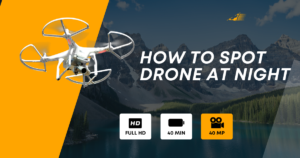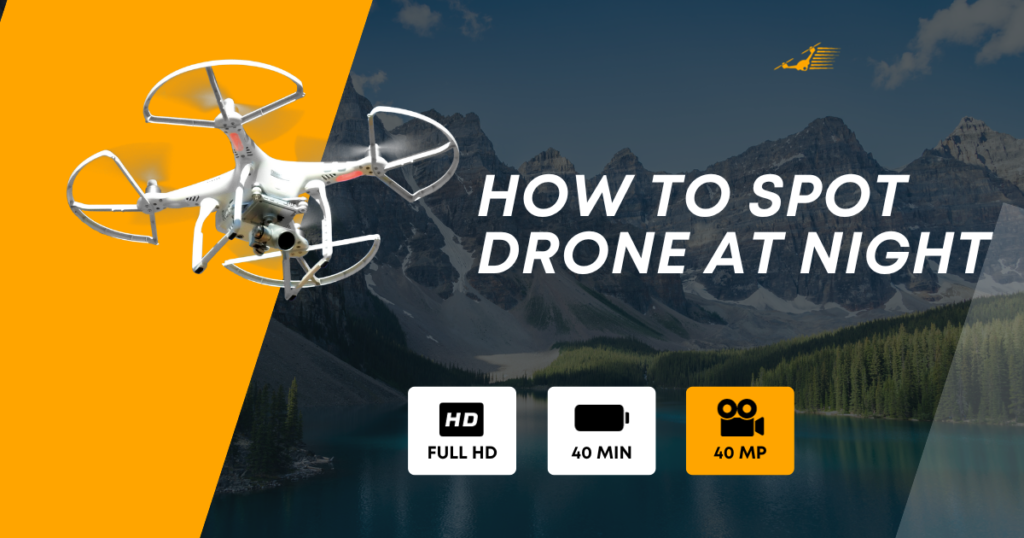
Police drones have become increasingly common tools for law enforcement, offering aerial perspectives in investigations, search and rescue missions, and crowd control. While these benefits are undeniable, the growing presence of drones, especially at night. Knowing how to identify a police drone at night can empower you to understand the scope of their operations and exercise informed caution.
Understanding Police Drone Surveillance
Law enforcement agencies deploy drones for various purposes, including surveillance, monitoring, and crowd control. These drones are equipped with advanced technology, making them inconspicuous and efficient, especially under the veil of darkness.
Tips to Identify Police Drones During Night Operations
1. Lights and Markings
- Indicator Lights: Police drones often feature blinking or colored lights that help with identification. Look for patterns like red, blue, or white lights blinking intermittently.
- Distinctive Markings: Some drones might bear identifiable police department logos or markings, albeit these might not always be easily visible in the dark.
2. Sound and Flight Patterns
- Low Audible Noise: Police drones are designed for stealth, emitting minimal noise during flight. Listen for a faint humming or buzzing sound that distinguishes them from other aircraft.
- Steady Hovering or Slow Movement: These drones typically move in a controlled, steady manner or hover in a fixed position for surveillance purposes.
3. Infrared Capabilities
- Heat Signature Detection: Police drones might be equipped with infrared cameras, allowing them to detect heat signatures. Look for any unusual heat sources visible through the drone’s sensors.
4. Size and Shape
- Compact Size: Most police drones are relatively small and compact, easily maneuverable for surveillance in tight spaces.
- Common Shapes: While drones come in various shapes, police drones commonly resemble quadcopters or hexacopters with multiple rotors.
Key Characteristics of Police Drones at Night:
1. Lighting Patterns
Police drones use specific lighting configurations for operational purposes. Recognize flashing patterns or combinations of red, blue, or white lights, indicating their law enforcement affiliation. These lights are strategically placed to maintain visibility and comply with aviation regulations.
2. Silent Flight
The low decibel level emitted by police drones distinguishes them from traditional aircraft. Their near-silent operation allows them to conduct surveillance discreetly, serving their intended purpose without drawing attention.
3. Advanced Technology
Equipped with cutting-edge technology, police drones may possess infrared cameras or night vision capabilities, enabling them to capture clear imagery even in low-light conditions. The presence of such features enhances their surveillance effectiveness during nighttime operations.
4. Purposeful Movement
Observe the deliberate and controlled movement of police drones. They tend to exhibit precise flight patterns, including hovering or slow, methodical movements, reflecting their surveillance objectives.
5. Proximity to Restricted Areas
Police drones often patrol or conduct surveillance in restricted or sensitive areas. If you notice a drone lingering in specific locations, especially near government buildings, public events, or crime scenes, it might indicate law enforcement monitoring.
Here are 10 effective ways to spot a police drone at night:
- Light Patterns: Look for blinking or colored lights. Police drones often use red, blue, or white lights that flash intermittently, aiding in their identification.
- Distinctive Sounds: Listen for a faint humming or buzzing sound. Police drones are designed to be relatively quiet during operation, differentiating them from other aircraft.
- Markings or Logos: Some drones might bear identifiable police department logos or markings. While these might not be easily visible in the dark, they can help with identification if spotted.
- Infrared Emissions: Watch for unusual heat sources visible through the drone’s sensors. Police drones often have infrared capabilities to detect heat signatures, which might be observable at night.
- Steady Movement or Hovering: Police drones tend to move in a controlled, steady manner or hover in a fixed position for surveillance purposes, distinguishing them from other flying objects.
- Size and Shape: Look for small and compact drones. Police drones are often smaller in size and resemble quadcopters or hexacopters with multiple rotors.
- Consistent Flight Patterns: Observe the drone’s flight behavior. Police drones display purposeful and methodical movements, maintaining a particular pattern or position.
- Specific Locations: Note if the drone is lingering around restricted or sensitive areas like government buildings, public events, or crime scenes. This could indicate law enforcement monitoring.
- Low Profile Lighting: Some police drones use minimal or dim lighting to blend in with the night sky. Pay attention to faintly lit drones that aim to minimize visibility.
- Night Vision Equipment: Be aware that police drones might utilize night vision technology, allowing them to operate effectively in low-light conditions without visible lights.
Conclusion
Identifying a police drone amidst the darkness demands a sharp eye for specific characteristics and behaviors. From distinct lighting patterns to subtle sounds and purposeful movements, recognizing these features can significantly aid in distinguishing these surveillance devices from other aerial entities.
While some drones might bear identifiable markings or utilize infrared technology, their small, compact size and strategic hovering positions are often indicative of law enforcement monitoring. Moreover, their tendency to patrol restricted or sensitive areas reinforces the notion of their role in surveillance operations.

